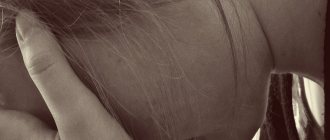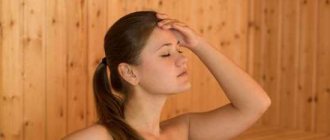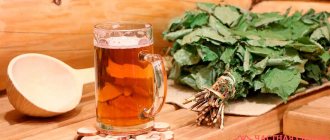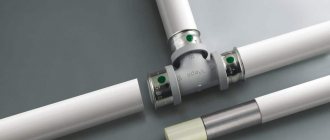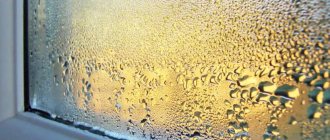Do you remember the famous “Monologue of a stuntman” by Y. Arlazorov: “I was the first to enter the burning hut, however, then they took me out first”? Without any stunt work, there are plenty of such cases in everyday life, the only difference being that the word “hut” needs to be replaced with “steam room”. And this is not good. In today’s material, we consider cases of why visitors feel ill after a bath, how to deal with it, and how to prevent this from happening.
What could a headache after a bath indicate?
Headache after a bath, as a rule, worries people with cardiovascular diseases.
Visiting a bath is a complex event, including a number of sequential procedures. Alternating high and low temperatures, burns when touching a broom and other influences provoke stress for the body. Often a person begins to complain of a headache.
Pain after a water procedure may be a sign of:
- cardiovascular pathologies;
- dysfunction of internal organs and systems;
- anemia;
- infectious process in the body;
- diseases of the nervous system.
The list shows the most common pathologies. Ordinary factors can also act as a trigger. For example, a headache can occur due to osteochondrosis in the cervical spine. High temperature provokes an increase in pressure. As a result, blood enters the brain in greater quantities, and its outflow occurs slowly due to vasoconstriction. The face becomes red and swollen. The person begins to feel sick.
The cause of headaches can also be severe fatigue. A person’s age plays an important role. It is not recommended to visit the bathhouse for people over 60 years of age, as well as for those who have never taken such water procedures.
How to prevent overheating
Each type of bath has its own temperature. For example, in a traditional Russian bathhouse, the temperature in the steam room is 70–80 degrees. In a bathhouse, the level of humidity has a special effect on the human body. High humidity in the room is formed due to watering hot stones and reaches up to 90%. Thus, the humidity level indicator can balance, but the higher it is, the heavier the body bears the load and the faster it can overheat.
To avoid overheating, cover your head with special hats
The following indicators are considered the most optimal: heat indicator - 60 degrees , humidity indicator - 60–70%. With this ratio, all internal organs will warm up evenly, and the pores will open to remove toxins. You can monitor these readings using a bath thermometer.
DIY camp sauna
Precautionary measures
Overheated in the bathhouse, what to do we considered. To prevent overheating, you must adhere to the following safety measures:
- Cover your head with special hats. These natural wool and cotton hats protect your head from overheating. To improve the protective effect, it is better to first moisten the hat with cool water, only then put it on your head.
- Do not plunge into the font headlong. Pleasant sensations of joy and adrenaline are enhanced by diving into an ice hole or rubbing with snow after a bath. You can dive headlong into the plunge pool only after careful preparation. Remember that such procedures are only suitable for completely healthy people; others should not take risks. It is important that the procedure brings pleasure and not a burden. After all, the final stage can be replaced by pouring water at a comfortable temperature or slowly cooling in the dressing room.
- Do not tolerate extreme heat. The point of the bath is to remove toxins from the body through sweating. 15 minutes is enough for you to cleanse your body. Don't forget to listen to your body. There is no need to force yourself or your loved ones to stay in the steam room if the procedure does not bring you pleasure or makes you feel worse.
- Do not drink alcoholic beverages. This point seems the simplest and most natural, but today there are many who like to sit in a warm, friendly, cheerful atmosphere in a bathhouse, which was originally intended only for washing. Alcohol, entering the blood, leads to dilation of the blood vessels of the circulatory system, increases the load on the heart, and reduces the sensitivity of receptors. In a state of intoxication, a person loses track of time, staying in the steam room longer than expected, which provokes a large loss of moisture, which will then have to be restored.
Do-it-yourself barrel sauna
Drink water before visiting the sauna
.
Note! For wellness activities, herbal teas, juices and plain still water are more suitable.
External reasons
Using a broom soaked in essential oils can cause headaches.
In addition to pathologies that are a clear contraindication to taking a water procedure, there are many external factors. They can cause headaches not only in a sick person, but also in an absolutely healthy person.
After a bath I have a headache for the following reasons:
- carbon monoxide poisoning that entered the steam room from the stove;
- oxygen deficiency due to improper functioning of ventilation;
- the use of harmful stones that emit steam with a high content of toxins;
- arrangement of shelves under the ceiling of the steam room;
- physical activity before the water procedure;
- staying in a bathhouse or sauna in a towel.
Another provocateur of an unpleasant symptom is the use of brooms based on aromatic herbs or essential oils. The stores offer many exotic sets that have a strong, specific smell. Often an allergic reaction and headache are provoked in a person.
It is important to be able to steam competently. In a sitting position, a person is simultaneously in several tiers with different temperatures. The head is located in the high index zone, and the legs are in the low zone.
In some cases, headache occurs the day after the bath. This sign indicates existing problems with the cardiovascular system. The symptom will be observed in the morning if a person decides to drink alcohol or eat fatty foods in the bathhouse. This provokes a narrowing of the blood vessels in the brain, which in turn causes insufficient oxygen supply to the neurons. It is also not recommended to smoke in the steam room.
Which doctor should I contact?
Often, after physical exertion or mental stress, people feel worse. The nature of the pain can be varied. Compressive, pressing, throbbing pain in one side of the head is possible.
Pain during exercise is often functional in nature. They can occur for many reasons:
- Changes in temperature and atmospheric pressure;
- Stressful state during physical activity;
- Heat and stuffiness in the room;
- Dehydration is often the cause of headaches;
- Eat a large meal before training;
- Overweight people often suffer from hypoxia during exercise.
The likelihood of illness is higher in people with specialties: programmer, accountant, driver, who spend many hours at the computer or constantly strain the muscles of the eyes and neck.
Basic methods of therapy
If there are no contraindications, you can take a painkiller tablet.
Medications are used to relieve headaches after a bath. Traditional medicine recipes have proven themselves well. Massage acts as an additional remedy.
Medications
Cephalgia can be eliminated with the help of medications. Some of the most effective drugs in tablet form include Citramon, Analgin, Nurofen, Pentalgin, Paracetamol, Tempalgin.
The steam room provokes a strong load on the heart. Often, after visiting a bathhouse, a person’s blood pressure rises. Therefore, self-administration of drugs is fraught with complications. It is recommended to consult a specialist.
Folk remedies
You can eliminate headaches and normalize blood pressure using traditional medicine. Various herbal infusions have analgesic effects.
- Take 3 tsp. lemon balm, pour 200 ml of boiling water. Let the mixture sit for 15 minutes. Strain the broth and drink in small sips.
- Take 1 tbsp. l. dry St. John's wort and pour 200 ml of boiling water. Let it brew for 15 minutes, then strain. Drink small portions throughout the day.
- Take 1 tbsp. l. elderberry and pour 200 ml of boiling water. Let the mixture brew for 20 minutes and add 1 tbsp. l. honey Drink in small portions throughout the day.
- Take peppermint leaves, lemon balm, chopped coriander fruits in equal proportions. Pour 3 tbsp. l. a mixture of 100 ml of alcohol or vodka. Leave for 24 hours and then strain. Then add 20 ml of water. Store the tincture in the refrigerator. For headaches, soak a cloth in the mixture and apply to the temples and back of the head.
- Take 1 tsp. spring primrose rhizomes and fill them with 250 ml of water. Bring the mixture to a boil, then leave for 5 minutes. Strain and drink 3 cups a day for 7 days.
- Take 2-3 tbsp. l. dried chamomile flowers and pour 1 glass of hot water. Boil over low heat for 2 minutes. Drink the decoction 20 minutes before meals 3 times a day for a week.
A mixture of mint, orange and chamomile essential oils in a 5:2:2 ratio is often used. A few drops are diluted in water, which is poured into the steam heater. When you inhale the steam, the pain begins to go away as soon as possible. The method is quite specific. It requires special preparation and the availability of the necessary ingredients. The healing composition should be prepared in advance.
Massage
An excellent method for relieving headaches is massage. It can be targeted, general or relaxing. Typically the procedure is aimed at the neck and back of the head. To relieve unpleasant sensations, they resort to performing one or several types, based on the preferences of the person and the individual characteristics of the body.
Depending on the location of the pain, the massage procedure is performed differently:
- Temple area. Only painful points are massaged. Light pressure is applied to each zone. Then the manipulations become more intense. The duration of the procedure is 3 minutes.
- Occipital zone. The massage is performed in the absence of blood pressure. The area is rubbed with your palms very quickly in an up and down direction.
- Frontal region. Eyebrows are affected. They are pinched or pulled until tears appear in the eyes. After a few minutes, pressure is applied to the area between the eyebrows. Then the forehead is hugged with the palm and massaged until warmth arises.
The frequent appearance of cephalalgia after visiting a bathhouse indicates some kind of pathology in the body. A healthy person usually does not experience headaches. It is recommended to seek help from a doctor. The specialist will identify the cause and prescribe an appropriate treatment regimen.
Safe medications and pills
When planning a visit to the doctor, the patient should be prepared to answer questions about how often pain occurs and what its intensity is. This will help the doctor develop the correct treatment tactics.
↑
Groups of drugs effective for episodic attacks of pain
Medicines for the treatment of pathology are non-steroidal anti-inflammatory drugs (NSAIDs). They have an analgesic effect, relieve inflammation, and eliminate swelling.
Often prescribed:
- Ibuprofen-400 mg per day;
- Ketoprofen-100 mg/s;
- Naproxen-500 mg/s;
- Meloxicam-7.5-15 mg/s;
- Celecoxib-200 mg/s.
Most NSAIDs have a negative side effect: with long-term use, they negatively affect the organs of the gastrointestinal tract, including the development of drug-induced gastritis.
Medicines Meloxicam and Celecoxib are new generation drugs that do not have a negative effect on the gastrointestinal tract. The disadvantages of using these drugs include the relatively high price.
Analgesics are often used at home to relieve an attack. They do not treat the disease, but only relieve pain. Drugs in this group are suitable for stopping episodic attacks, but their systematic use leads to the occurrence of abuse syndrome.
What to do if your child becomes ill in the steam room
It is better to take children to the bathhouse when it has cooled down a little.
Steam procedures have a negative effect on the child’s health due to parents ignoring some contraindications. Sometimes the rules for conducting a water procedure are violated.
Often, steamy air provokes a child’s cough, fever and headache. Such symptoms may appear as the inflammatory process progresses. Sometimes they are the result of an allergic reaction to aromatic oils used in the bath. Temperature changes can also trigger pain. To avoid overheating, it is recommended to place the child on the bottom shelf and put a special cap on his head.
During the water procedure, it is important to monitor the condition of young visitors and stop it if they feel unwell. If a child complains of a headache, he should be taken out of the bathhouse into fresh air and allowed to lie quietly. In any case, parents should consult a doctor. To avoid complications, self-medication is not recommended.
Tags
I go to the sauna for the benefit of the sauna in the sauna as in the Russian sauna as a sauna.Turkish bath temperatureand baths in the sauna everyin the sauna every sauna after a workoutthat after the saunaafter the saunaI after the saunanot after the saunasometimes after the saunadates after the sauna.I go after trainingregular drowsiness occursHowever, drowsiness canConstant drowsiness candaytime drowsiness canconstant drowsiness and daytime drowsiness. chronic drowsiness may; severe drowsiness; midday drowsiness. and drowsiness may
drowsinesssaunasillnessdoctorsleeprestpeoplesleepfatiguefoodconstantmainissuechronicvisitfooddisturbancemakesymptomhighnewstimes
First aid
Health problems that arise should not cause panic. You should act calmly. Typically, a person with a headache is advised to lie down on a bench in a waiting room or rest room. You need to place a cushion of sheets or towels under your feet. You can rest your lower limbs on the wall. Usually after 10-20 minutes the pain stops.
If cephalalgia occurs, it is recommended to go out into fresh air. This ensures the supply of oxygen to the brain. If you have close people or acquaintances nearby, you can ask for a relaxing massage. Usually the cervical or temporal region is affected.
It is advisable to measure blood pressure, this will help narrow down the possible causes of the attack. If your readings change, you should immediately consult a doctor.
What tests are usually prescribed?
At an appointment with a neurologist, a physical examination of the patient is performed: basic neurological reflexes are checked and the neck muscles are examined.
The doctor writes out a referral for tests: general blood test, biochemical blood test, blood sugar test.
A general blood test with an increase in ESR or an increased content of leukocytes indicates inflammation in the body.
Blood biochemistry may indicate a deficiency of one of the vital elements, which leads to discomfort in the head area.
Low blood glucose levels are often accompanied by cephalgia, dizziness and weakness.
The doctor may write a referral for additional tests:
- The gas composition of arterial blood can reveal cerebral hypoxia.
- A blood test for hormones determines various abnormalities in the functioning of the hypothalamus.
A neurologist can give a referral to one or more diagnostic methods:
- Magnetic resonance imaging (MRI) - excludes the presence of various neoplasms (tumors and cysts), aneurysms. The photographs clearly show post-traumatic defects, neurodegenerative abnormalities, and changes in blood vessels affected by atherosclerosis.
- Computed tomography (CT) is the most informative method for studying the brain. It gives a clear idea of pathological changes in the skull and brain, pathology of bone tissue, blood vessels and brain structures. Provides information about the consequences of traumatic brain injuries. The disadvantage of this method is the significant radiation dose during the study.
- Electroencephalography gives an idea of the presence of pathological changes in blood vessels and impaired cerebral circulation.
- Doppler ultrasound (ultrasound of the vessels of the head and neck) - shows the presence of atherosclerotic plaques in the arteries; narrowing and tortuosity of the arteries, leading to brain hypoxia; peripheral vascular resistance.
- Rheoencephalography (REG) - gives an idea of the tone and blood flow of blood vessels. Using REG, the following are diagnosed: hypertension, atherosclerosis, vegetative-vascular dystonia.
- MRI of the cervical spine - the presence of cervical osteochondrosis can cause pain in the head and neck, which intensifies when turning the head.
- Rheovasography of cerebral vessels (RVG) - shows the quality of blood flow through the great vessels, evaluates collateral circulation.
- Radiography will be less known. In the image you can only see the bone structures of the skull, soft tissues are not visible.
There is no need to panic when scheduling such a serious examination. The doctor excludes rare severe pathologies and looks for the causes of the pain process.
Based on the studies, if no serious organic lesions are found, the cause of the disease is usually diagnosed. It develops as a result of: vascular spasms, cerebral hypoxia, hypertonicity of cerebral vessels, hormonal imbalances, vegetative-vascular dystonia or osteochondrosis, provoked by physical or psycho-emotional stress.
↑
Literature
- L. G. Akhmadullina: Headache
- D. Marcus: Headache
- Evgeny Rozner: Headache. Migraine
- Gyuzal Tabeeva: Headache. Management
- Alekseev, Alyabyeva, Amirov: Glaucoma. National leadership
- V. I. Morozov, A. A. Podshivalin, G. E. Chigvintsev, G. A. Yulmetov: Natal damage to visceral organs
- V.N. Shtok: Headache. Practical guide
- A. I. Ermolaeva, G. A. Baranova: Headache
- A. M. Satybaldyev: Giant cell arteritis. Part 1. Terminology, classification, clinical manifestation, diagnosis
- Kolosova O. A., Osipova V. V.: Classification of headaches
Treatment of chronic disease
Sometimes cephalalgia becomes chronic. The pain occurs every day, continuously, with varying degrees of intensity.
Tricyclic antidepressants are prescribed for a long course of 2-6 months. They relieve pain and help normalize the psycho-vegetative state of the nervous system.
Amitriptyline 10-100 mg/s is most often prescribed, the dose is increased gradually. The drug relieves pain well, but has many negative side effects and is addictive.
As an alternative, selective serotonin reuptake inhibitors are prescribed: Fluoxetine, Paroxetine, Sertraline. The course of treatment is at least 2 months. These drugs have less toxicity.
In addition to prescribing drug therapy, the doctor will recommend massage, a course of physiotherapy or acupuncture.
